What are the different typesof drilling router cutter? |
||||
 |
||||
Dowel drill cutters |
||||
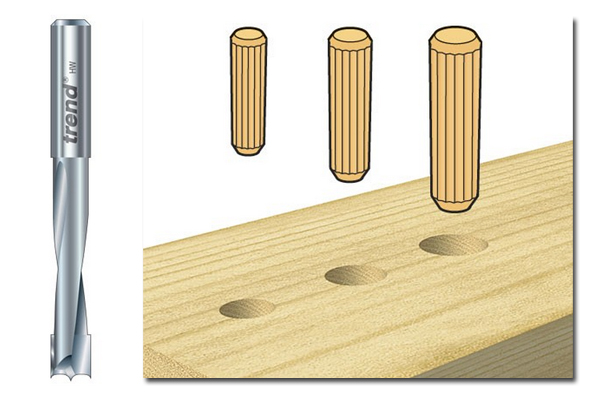 |
Dowel drill cutters, also called lip and spur drills, are used to drill accurately sized holes to receive dowels or plugs. They have a sharp central point flanked by two lips and two spurs.
with shank diameters of ¼”, ½”, and 8mm. currently all have ¼” shank diamters. |
|||
 |
The central point is the part that penetrates the timber’s surface first, followed by the two spurs, which cut the outline of the hole. As the drill moves down, the lips make contact with the timber surface and remove a bulk of material.
These cutters also have helical flutes, which help to transport the waste material out of the hole efficiently, as well as leaving a clean finish on the edge of the hole. |
|||
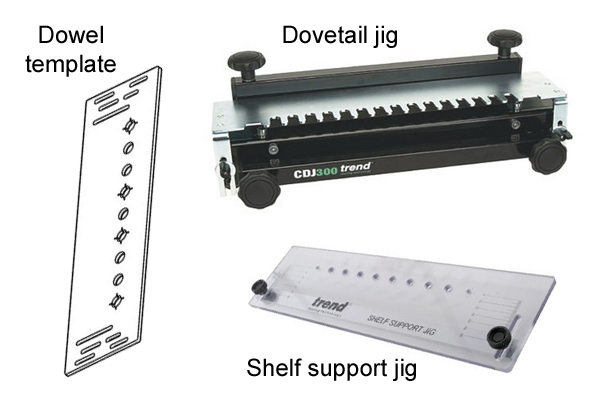 |
Because of their unique design, these cutters are able to produce neat, tear-free holes.
Most models are designed for use with a dowel template used in conjunction with a dovetail jig, or with the .
They can be used in drilling machines or routers. |
|||
Counterbore and countersink cutters |
||||
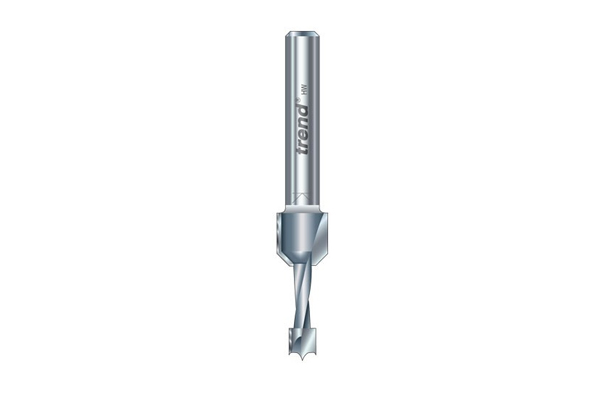 |
These cutters are designed to drill clearance holes for bolts and screws, and then either countersink or counterbore the top half of the hole, depending on the fastener head.
Counterboring and countersinking is carried out so that the fastener can be set below the surface of the workpiece. Sometimes, a plug is then inserted into the hole above the fastener, in order to hide it from view. |
|||
 |
The bottom half of a counterbore or countersink cutter resembles a dowel drill, and is the part that penetrates the material first and cuts the clearance hole. The top section of the cutter has either a straight-sided or tapered profile, and will impart this shape at the top of the clearance hole, for the relevant fastener head. The Professional TCT range includes countersink and counterbore router drills, and also some drill counterbores. In the HSS range, you will find two 3 flute countersink cutters, specially designed for the window fitting industry. |
|||
 |
||||
Plugmakers |
||||
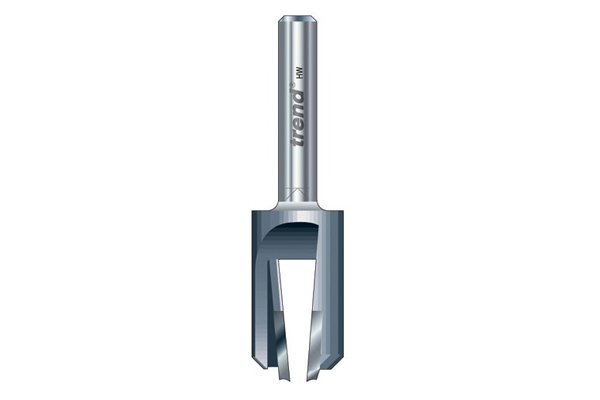 |
Plug cutters, also known as plug makers, are a type of cutter that is designed to cut out a small wooden cylinder that can be pushed into a counterbored screw hole to disguise the top of a screw. | |||
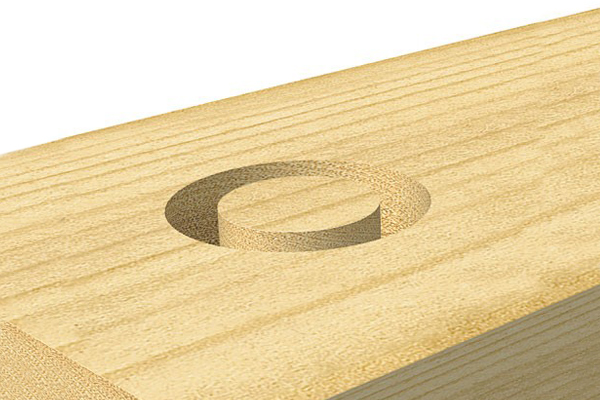 |
Once cut, the plugs must be removed from the material they were cut from. You can do this by levering them out with a flat head screwdriver. They can then be tapped into the screw hole, ready to be sanded flush. | |||
Pip cutters |
||||
 |
Pip cutters are used for decorative purposes. They recess and round off a small area on the surface of material, leaving behind a decorative 'pip'. |
|||
Hinge cutters |
||||
 |
Trend hinge cutters are used to create circular, flat-bottomed recesses that will fit cabinet door hinges. These cutters are often known as machine bits, and sometimes known as blum cutters. |
|||
Through hole drill cutters |
||||
 |
Through drilling cutters lack the versatility of some other types of drill bit and are only designed for drilling straightforward holes through a workpiece. However, their advantage over standard drill bits comes with the fact that they are being used in a router, which guarantees that the holes they produce will be perpendicular to the surface of the workpiece. |
|||
 |
||||







